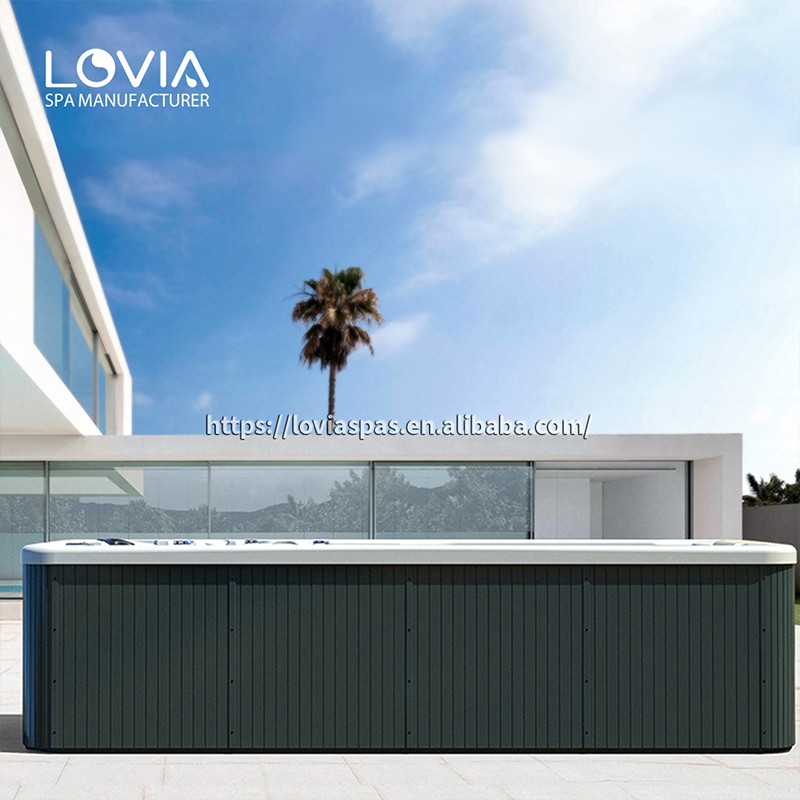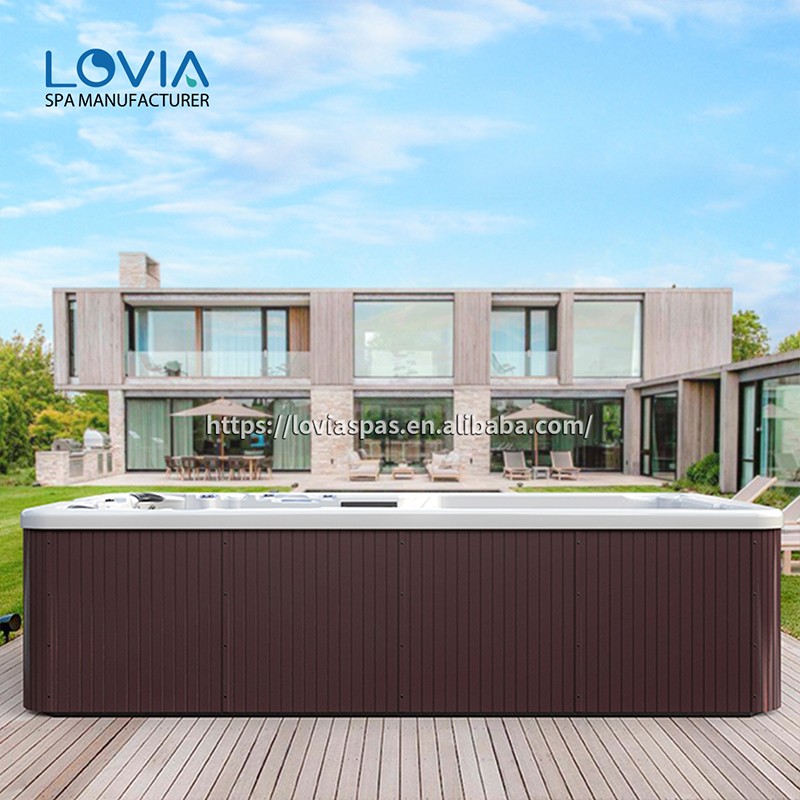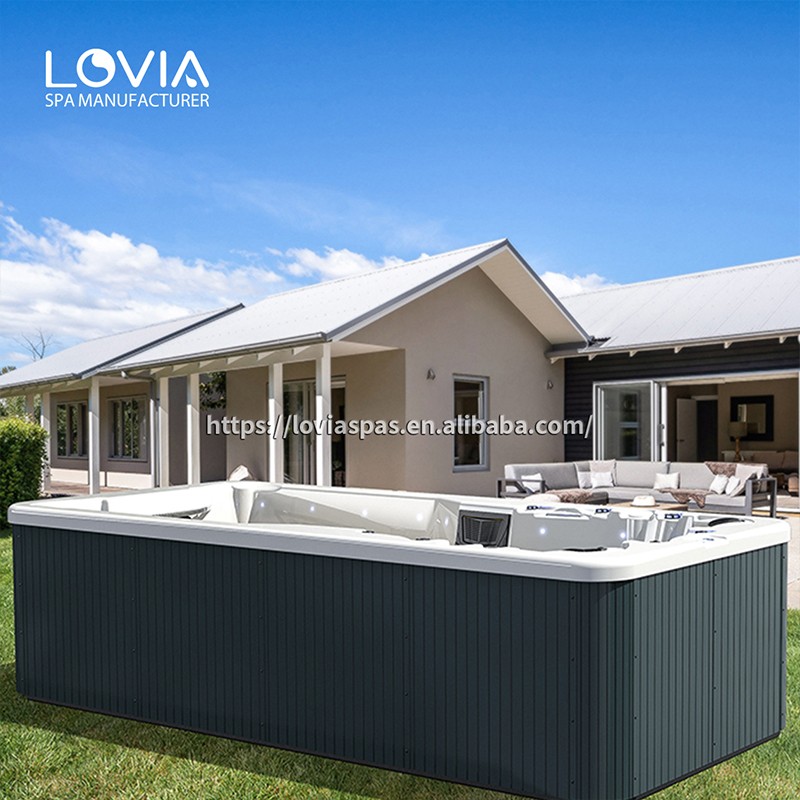
Can I use salt instead of chlorine in my swim spa?
2024-08-23 15:30Swim Spa, as a health device for modern families, is widely popular for its versatility and convenience. However, keeping the water clean and safe is an important part of using a swim spa. Traditionally, chlorine has been the most commonly used disinfectant, but some users have expressed concerns about its odor and potential health effects.
As a result, many people are looking for alternatives to chlorine. This article will explore the feasibility of using salt instead of chlorine in a swim spa, as well as other alternatives to chlorine.

The use of chlorine and its problems
1. The role of chlorine
Chlorine is a powerful disinfectant that is widely used in water quality management in swimming pools and spas. Its main functions include:
●Sterilization: Chlorine can effectively kill bacteria, viruses and other microorganisms in water to ensure hygienic water quality.
●Algae prevention: Chlorine can inhibit the growth of algae and prevent the water from turning green and producing odors.
●Oxidating organic matter: Chlorine can oxidize and decompose organic matter in water, such as human excrement and cosmetic residues.
2. Disadvantages of chlorine
Although chlorine is effective in water quality management, there are also some problems with its use:
●Odor: The smell of chlorine is pungent, and prolonged exposure may cause discomfort.
●Irritation: High concentrations of chlorine can irritate the skin, eyes and respiratory tract, causing dryness, itching and other uncomfortable symptoms.
●By-products: Chlorine reacts with organic matter in water to produce trihalomethanes (THMs) and other by-products. These substances may be harmful to health.

Can I use salt instead of chlorine in my swim spa?
Salt water systems – using salt instead of chlorine
The brine system uses a salt electrolytic cell to convert salt (sodium chloride) into sodium hypochlorite to achieve disinfection effects. The specific process is as follows:
●Add salt: Add the right amount of salt to your spa, usually at 3,000-4,000 ppm (three thousand to four thousand parts per million).
●Electrolysis process: When water passes through the electrolytic cell, the salt is decomposed into sodium ions and chlorine gas, and the chlorine gas is further dissolved to form sodium hypochlorite.
●Recycling: Sodium hypochlorite is re-converted into salt after disinfection in water and reused without frequent addition.
1. Advantages of Salt Water Systems
●Reduce irritation: The concentration of sodium hypochlorite in the saline system is lower, reducing irritation to the skin, eyes and respiratory tract.
●Reduce odor: The chlorine odor produced by salt water systems is lighter and more mild.
●Easy maintenance: The brine system automatically generates disinfectant, reducing the frequency and cost of manually adding chemicals.
2. Disadvantages of Salt Water Systems
●Initial cost: Installing a brine system requires purchasing electrolysis equipment, and the initial investment is relatively high.
●Equipment maintenance: Electrolysis equipment requires regular maintenance and cleaning to ensure its normal operation and lifespan.
●Corrosion risk: High-concentration salt water may cause corrosion to metal parts and equipment, requiring the use of anti-corrosion materials and regular inspections.

What else can be used instead of chlorine in a swim spa?
In addition to salt water systems, there are several other alternatives to chlorine available for disinfection:
1. Ozone disinfection
Ozone (O3) is a strong oxidant with extremely strong bactericidal ability. The ozone generator converts oxygen in the air into ozone. Ozone quickly decomposes in water, releasing oxygen atoms to kill bacteria and viruses.
●Advantages: Ozone disinfection is fast, does not produce harmful by-products, and can effectively remove odors and organic pollutants in water.
●Disadvantages: Ozone has a short duration in water and needs to be used in conjunction with other disinfectants; equipment costs and maintenance costs are high.
2. UV disinfection
Ultraviolet (UV) disinfection uses high-energy UV beams to destroy the DNA of microorganisms, causing them to lose their ability to reproduce. The ultraviolet lamp emits ultraviolet light of a specific wavelength, irradiates the passing water flow, and kills microorganisms.
●Advantages: No chemical additions, no by-products; effectively remove bacteria and viruses in water.
●Disadvantages: Ultraviolet disinfection can only take effect when water flows through the lamp and needs to be used in conjunction with other disinfectants; the lamp needs to be replaced regularly and the maintenance cost is high.
3. Mineral disinfection
Mineral disinfection systems utilize the antibacterial properties of mineral ions such as copper and silver for water quality management. The mineral sterilizer releases copper ions and silver ions through the electrolysis process, and these ions have a bactericidal effect in the water.
●Advantages: Mineral ions are long-lasting and effective, reducing the use of chemicals; gentle to skin and eyes, non-irritating.
●Disadvantages: The mineral disinfection effect is slow and needs to be used in conjunction with other rapid disinfectants; equipment and maintenance costs are high.
Water quality management in your swimming spa is an important part of ensuring user health and comfort. Although chlorine is a traditional disinfectant, its potential health effects have prompted a search for alternatives.
Methods such as salt water systems, ozone disinfection, ultraviolet disinfection and mineral disinfection each have their own advantages and disadvantages, and users should choose the appropriate solution based on specific needs and conditions.
